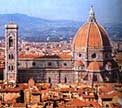
|


|
|
|
Mr. Sedivy's
More Features:
|
Highlands Ranch High School - Mr. Sedivy -
World History - The Stuarts (Elizabeth I left no heir; she was known as the "Virgin Queen.") James I (1603 - 1625)
Charles I (1625 - 1649)
He had religious problems. He was an Anglican with a Catholic wife. Charles persecuted Puritans, having them imprisoned and fined. Presbyterians in Scotland revolted. To get money, Charles called in Parliament in 1640. They said "no money," so he said "no Parliament." (short Parliament) The new Parliament met until 1653 (long Parliament) and made new laws limiting the king's power.
The Civil War was a series of wars between 1642 - 1651. Charles sent troops to arrest Parliament because they had wanted to take over the army. People of London became scared and rioted. There was war between the "Cavaliers" (Anglicans, royalists, nobility, Catholics) and the "Roundheads" (Puritans and Middle Class, so called because they did not wear the wigs of the upper class). The Roundheads won. "God made them stubble before our swords," according to Cromwell. Charles I was beheaded in 1649. Oliver Cromwell (1648 - 1658)
The royal oak, symbol of authority and stability, is chopped down under the supervision of Oliver Cromwell. The common herd graze regardless, being fattened up for slaughter. Hell gapes beneath Cromwell, who looks unconcerned. Magna Carta and the rule of law go down with the tree.
The Rump was all that was left of the original Long Parliament after repeated purges. Attendances were down to under 100 members. In April 1653, Cromwell dismissed them with the words: "You have sat here too long for the good you do." That night a poster appeared outside the palace of Westminster: "This House is to be let: now unfurnished." After Cromwell's death in 1658, he was burried in great state in Westminster Abbey. At the Restoration, his body was exhumed, dragged to Tyburn and beheaded. His head was stuck on a pole outside Westminster Hall, where it remained for over 20 years. Finally, it was blown down in a gale during the reign of James II. Return of the Stuarts Charles II (1660 - 1685)
As part of his settlement with the Scots, Charles was obliged in 1650 to accept a Prebyterian form of Church government and subscribe to the Covenant. He launched the desperate invasion from Scotland that ended at the battle of Worcester in 1651.
Some of Charles II's opponents, desperate after their defeat in 1681, turned to conspiracy. A half-hearted plan to assassinate Charles and his brother on their way back from Newmarket at the Rye House, near Hoddesdon, Hertfordshire, was discovered in 1683. The frog and the mouse contending to be king are presumably Monmouth and William of Orange. The kite destoyed them both.
Left panel: Two kings kneeling before the Pope with London burning in the background, the poisoning of Charles II, the body of a loyal courtier lying in a field, and the martyrdom by burning of English bishops. Right panel: The scene shows Charles II with the church at his feet (symbolized by a woman with a church on her head) and the executions of traitors in the background. James II (1685 - 1688)
This was known as the "Glorious Revolution." (Revolution because they overthrew the last Catholic monarch, Glorious because no one died.) Parliament put more restrictions on the monarch. The king couldn't make or suspend laws, have an army during peacetime, and the king couldn't interfere with freedom of speech in Parliament.
The triumph of Charles II after the Oxford Parliament and the succession of his brother James brought bad times for Titus Oates, principal author of the Popish Plot. After the Glorious Revolution he was given a small pension and died in 1705.
The awkward constitutional position following James II's flight was solved by offering the crown jointly to William and Mary. William's personal situation, should Mary die before he did, was safeguarded by Anne who reluctantly agreed to postpone her claim to the throne. National Monarchies: Spain France England The Interesting Life of Queen Elizabeth I The Stuarts - James I, Charles
I, Charles II, James II Historical Periods of | Prehistory
| Mesopotamia & Phoenicians |
|
Highlands Ranch High School ![]() 9375 South Cresthill Lane
9375 South Cresthill Lane ![]() Highlands Ranch, Colorado 80126
Highlands Ranch, Colorado 80126 ![]() 303-471-7000
303-471-7000
Mr. Sedivy's History Classes
| Colorado History | American
Government | Modern European History | Advanced
Placement European History | Rise of England
| World History |
| Home | Back to top of page |
Site Contents |















